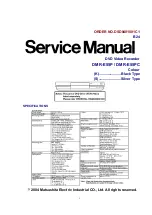
The negative effect of harmonics is 2-fold
•
Harmonic currents contribute to system losses (in
cabling, transformer).
•
Harmonic voltage distortion causes disturbance
to other loads and increase losses in other loads.
Non-linear
Current
Voltage
System
Impedance
Disturbance to
other users
Contribution to
system losses
130BB541.10
Illustration 3.5 Negative Effects of Harmonics
3.2.7.5 Harmonic Limitation Standards and
Requirements
The requirements for harmonic limitation can be:
•
Application-specific requirements.
•
Standards that must be observed.
The application-specific requirements are related to a
specific installation where there are technical reasons for
limiting the harmonics.
Example
If 1 of the motors is connected directly online and the
other is supplied through a frequency converter, a 250 kVA
transformer with 2 110 kW motors connected is sufficient.
If both motors are frequency converter supplied, however,
the transformer is undersized. Using more means of
harmonic reduction within the installation or selecting low
harmonic drive variants makes it possible for both motors
to run with frequency converters.
There are various harmonic mitigation standards,
regulations, and recommendations. Different standards
apply in different geographical areas and industries. The
following standards are the most common:
•
IEC61000-3-2
•
IEC61000-3-12
•
IEC61000-3-4
•
IEEE 519
•
G5/4
See the
VLT
®
Advanced Harmonic Filter AHF 005/AHF 010
Design Guide
for specific details on each standard.
In Europe, the maximum THDv is 8% if the plant is
connected via the public grid. If the plant has its own
transformer, the limit is 10% THDv. The VLT
®
Refrigeration
Drive FC 103 is designed to withstand 10% THDv.
3.2.7.6 Harmonic Mitigation
In cases where extra harmonic suppression is required,
Danfoss offers a wide range of mitigation equipment.
These are:
•
12-pulse drives.
•
AHF filters.
•
Low harmonic drives.
•
Active filters.
The choice of the right solution depends on several
factors:
•
The grid (background distortion, mains
unbalance, resonance, and type of supply
(transformer/generator).
•
Application (load profile, number of loads, and
load size).
•
Local/national requirements/regulations (IEEE 519,
IEC, G5/4, and so on).
•
Total cost of ownership (initial cost, efficiency,
maintenance, and so on).
Always consider harmonic mitigation if the transformer
load has a non-linear contribution of 40% or more.
Danfoss offers tools for calculation of harmonics, see
.
3.2.8 Ground Leakage Current
Follow national and local codes regarding protective
earthing of equipment where leakage current exceeds 3.5
mA.
Frequency converter technology implies high frequency
switching at high power. This generates a leakage current
in the ground connection.
The ground leakage current is made up of several contri-
butions and depends on various system configurations,
including:
•
RFI filtering.
•
Motor cable length.
•
Motor cable screening.
•
Frequency converter power.
System Integration
Design Guide
MG16G202
Danfoss A/S © 08/2015 All rights reserved.
47
3
3
















































